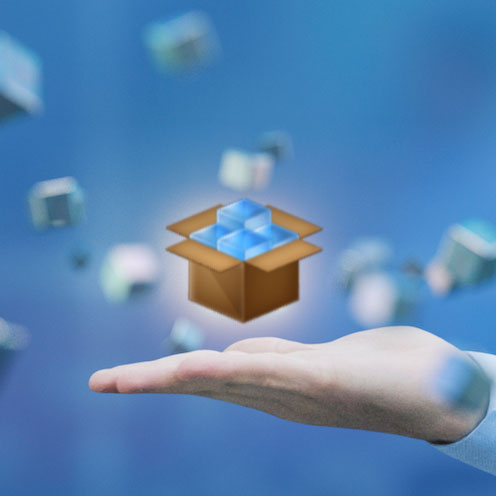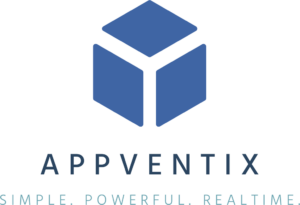Written by our engineers, TechVentiX is a blog series in which we’ll dive deeper into the technology of application distribution and management.
Organizations relying on Microsoft application virtualization technology (App-V) must plan to replace the App-V server components prior to the EOL in April 2026. By replacing the server components with supported solutions, such as AppVentiX, organizations can continue running App-V applications as support for the App-V client is continued as part of the operating system.
With AppVentiX, there’s no need to rely on App-V server components to continue using App-V within your organization. In this blog, we’ll walk you through the steps to migrate from the traditional App-V infrastructure to AppVentiX—ensuring continued support while gaining real-time control and enhanced functionality.
AppVentiX also enables seamless side-by-side management of both App-V and MSIX packages, using the same interface. When you’re ready, you can transition to MSIX gradually, with built-in support for converting App-V packages to MSIX at your own pace.
Benefits of using App-V and MSIX
The Microsoft Application package format is a proven and reliable solution for many organizations ensuring consistent deployments and simplified updates across the organization – with application isolation that prevented conflicts between applications and reduced compatibility issues.
Abstracting applications from the underlying operating system allows for real-time changes, easy updates and rollbacks, prevents application conflicts and pollution of your machines.
App-V Components
Microsoft App-V consists of server and client components. On the infrastructure side, App-V consists of five individual server components that each serve a specific purpose in an App-V environment.
None of the components mentioned are supported after the EOS in April 2026.
On the client side there are two components:
Both the App-V sequencer and the App-V client remain supported, there is no end-of-life anymore for these components.
Moving Away from App-V Server Components: The Need for Change
With the end-of-support of the server components imminent, organizations must seek alternatives to continue benefiting from application virtualization without facing unsupported environments. Transitioning to a modern, robust solution like AppVentiX ensures continuity and leverages advanced capabilities.
Microsoft has been explicit on the continuation of the App-V client and sequencer as they’re moved to fixed extended support. Unlike the App-V server component that are deprecated and support will end in April 2026.
Application Distribution with AppVentiX
AppVentiX offers a straightforward yet powerful way to manage both App-V and MSIX packages—without the need for complex back-end infrastructure. All you need is a file share. AppVentiX supports various storage solutions, including Windows file shares (direct or DFS), Azure file shares, QUIC enabled file shares, Nutanix, and NetApp.
We’ve built AppVentiX with scalability and resilience in mind. By leveraging intelligent agent-side caching, the platform can seamlessly support environments with 20,000+ clients. Even if the file share becomes temporarily unavailable, application deployments continue to function without interruption.
AppVentiX will take care of all aspects of application distribution and management:
- Configuration of the App-V client (you no longer need GPO’s for that)
- Distribution of packages to clients (you no longer need a publishing server)
- Publishing of applications to selected users and groups
- Prioritizing applications to ensure critical applications are available first
- Advanced cache management for (non)persistent machines
- Automated cleanup of packages no longer needed
- Real-time control and insight
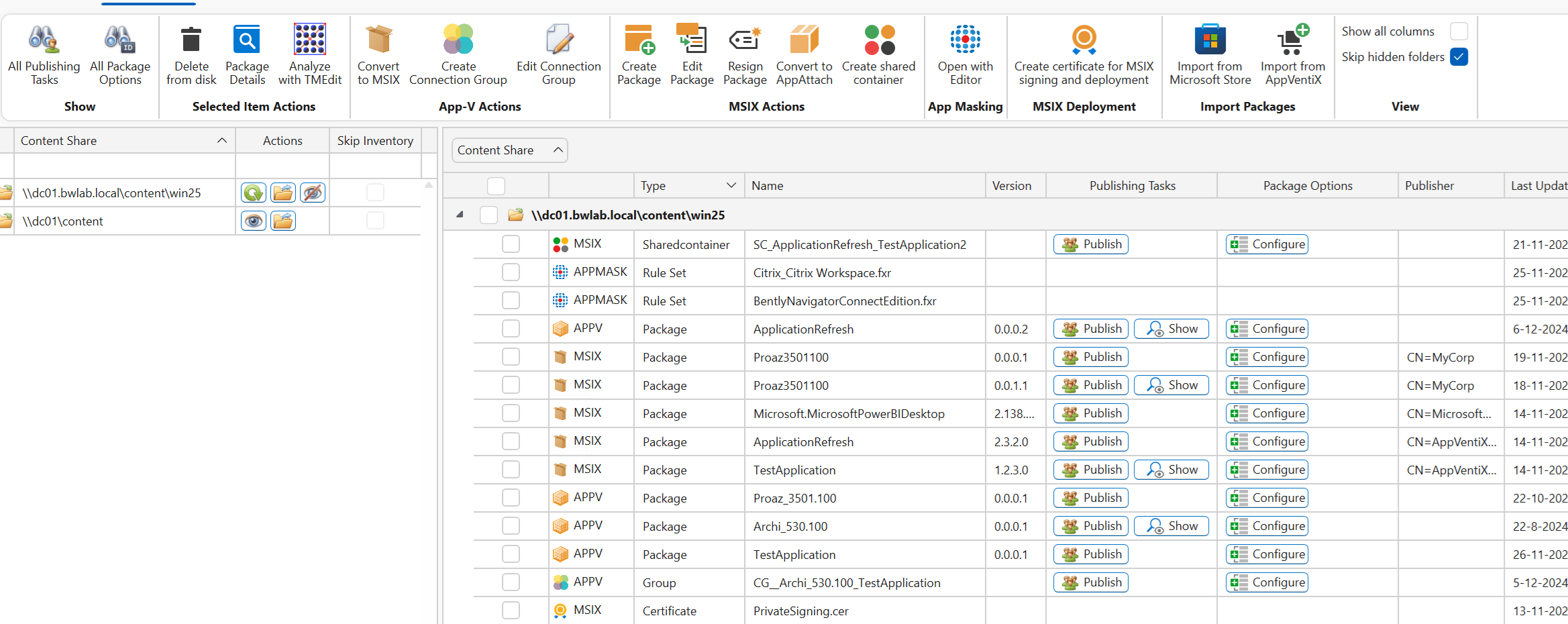
Steps to Migrate from App-V Infrastructure to AppVentiX
Migrating to AppVentiX is a straightforward process, ensuring minimal disruption.
Here’s a step-by-step guide to help your organization transition smoothly:
Assessment
- Inventory publishing server: Identify the packages currently published to users and machines, and verify if a deployment configuration file is configured
- Export configuration: Deployment configuration files are fully supported by AppVentiX, export the configuration file, save it as .appd file next to the package, AppVentiX will automatically process the configuration
- Export publishing information: Export user group information which can be used to generate publishing tasks in AppVentiX, this can be done manually in the Central View console or automated using the AppVentiX Powershell module
Please note: The App-V infrastructure and AppVentiX can run side by side. Please check the agent settings needed for this co-existence later in this article.
Set Up AppVentiX Environment
- Establish File Share(s): Create a configuration share and a content share, you can use existing file share(s) which are currently in use by the App-V full infrastructure. It’s also possible to use the same share for both the configuration and the content. It’s recommended to store the configuration in a (sub) folder named Config or Configuration.
Make sure to verify the security permissions for the file share(s), the permissions can be found in the admin guide or in the Central View console in the configuration tab.
Configure AppVentiX
- Create Machine Group: Create a Machine Group that contains the machines running the App-V client. These are the machines where your users run their applications. This can be a Citrix catalog, RDS environment, AVD hostpool, Windows 365 machines or a machine group containing physical machines. Basically, AppVentiX supports every use case, also offline use cases are supported. Click on Manage Groups in the Manage Machines section followed by Add new Machine Group. You can define a machine group based on an Active Directory Group or OU, or Entra ID.
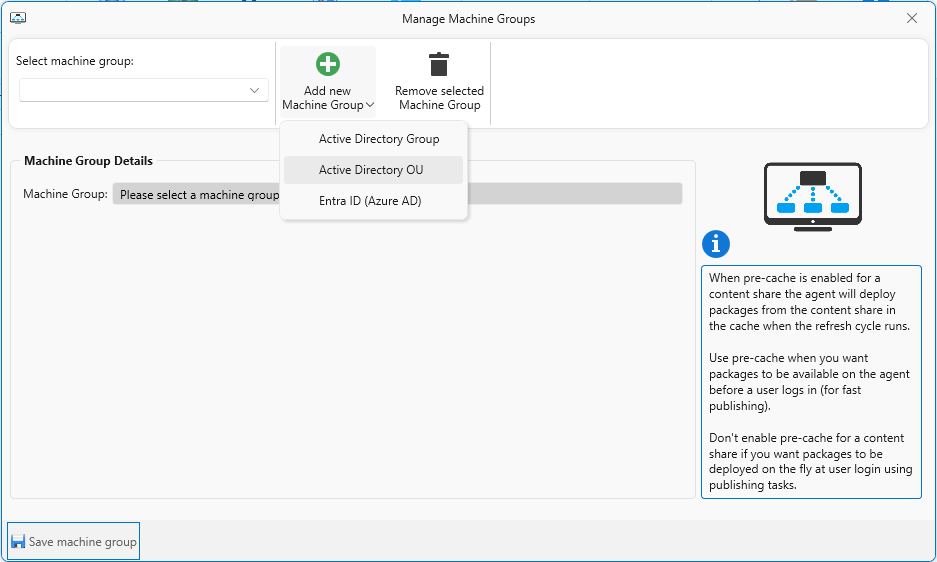
Configure AppVentiX
- Configure agent settings: Click on configure agent settings and enable the App-V feature (you can also enable MSIX if you want to manage MSIX packages with AppVentiX as well). Define the configuration of the App-V client for the specific machine group, you can keep the existing settings from your current configuration. It’s also possible to skip the App-V client settings for now and enable them later after the migration.
Typically the default settings works for most organizations. If you configured specific settings for your client, such as the App-V cache location, apply them here.

Configure AppVentiX
- Run side-by-side with App-V publishing servers active: To run side-by-side with the App-V server component on the same machines, disable the setting: “Automatically unpublish unmanaged packages and connection groups.”
This prevents AppVentiX from unpublishing packages that were published through the App-V publishing server.
Once all publishing tasks are fully managed through AppVentiX, re-enable this setting to benefit from this feature. Doing so ensures that applications are automatically unpublished when users are no longer entitled to them, helping maintain a clean application environment and avoiding orphaned shortcuts.
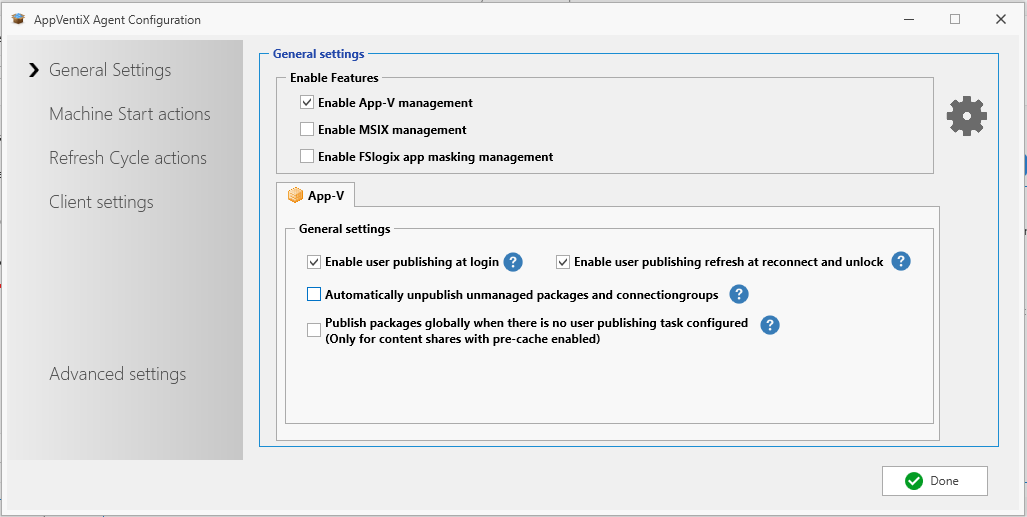
Configure AppVentiX
- Test Deployments: Conduct testing to ensure applications are delivered and published correctly. It is recommended to create a test machine group in which you place isolated machines to test the deployment.
- Create publishing tasks for your packages in AppVentiX, either manually or with the AppVentiX Powershell module. When all applications are managed by AppVentiX, continue to step 4.
Remove App-V publishing configuration
- Remove App-V client configuration: If you configured a configuration of the App-V client, e.g. using GPO you can remove them because AppVentiX will configure the App-V client
- Cleanup configuration: Remove the configuration of the App-V publishing servers from the registry, this configuration can be found in the registry at HKLM\SOFTWARE\Policies\Microsoft\AppV\Client\Publishing\Servers.
Also remove any scheduled App-V tasks if present.
Once this configuration is removed, the App-V client is no longer under management by the App-V publishing server.
You can now shutdown the App-V publishing servers and remove the SQL database(s), they are no longer needed.
Conclusion
As the April 2026 deadline approaches, moving from App-V server components to AppVentiX provides a seamless and efficient path forward. AppVentiX simplifies application deployment, eliminates the need for complex infrastructure, and offers enhanced management capabilities. It also supports migration to MSIX, ensuring continued benefits from application virtualization on a modern, flexible platform.
Start planning your migration today to ensure uninterrupted application delivery and enhanced operational efficiency with AppVentiX.
Thank you for reading!
Check out our features page and our affordable pricing plans.
